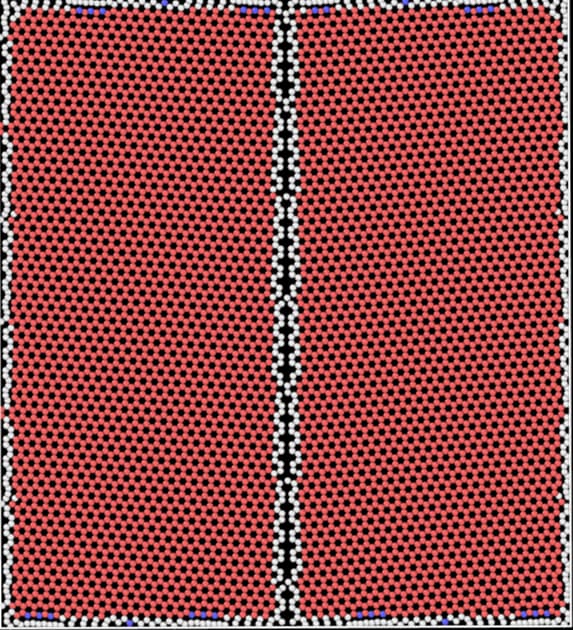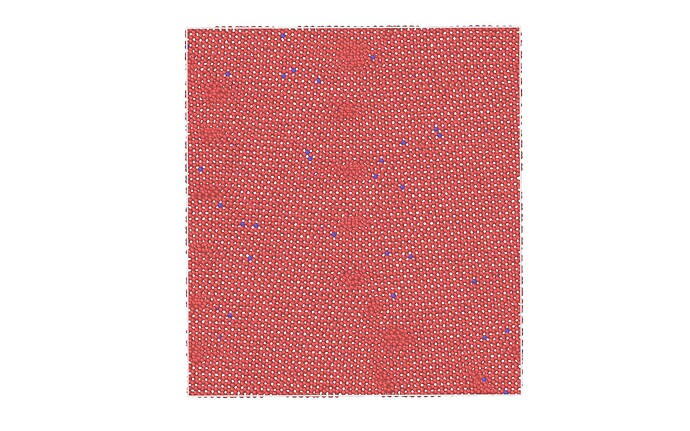Hello teachers, I have established a double crystal model of symmetrical tilt grain boundary, and then found that the symmetrical structure of grain boundary is destroyed and becomes very chaotic when it is kept at 500 °C.I want to ask whether this is caused by the movement of heated grain boundary atoms, is it a normal phenomenon ? Thank you
It can be, but we don’t know what your system is or what pressure you impose, so I am not sure what type of advice you are expecting.
Thank you for your reply, my system is pure magnesium ∑ 7 grain boundary, in the npt ensemble temperature of 773K, xyz direction to maintain zero pressure, heat preservation 1ns
The first picture is the structure diagram before heating, and the second picture is the picture during the heat preservation process. It is found that the symmetrical structure of the grain boundary during the heat preservation process.
Hi @kawhi,
This is impossible to say without more information on the model you use. It is likely the melting temperature of your model is lower than the experimental melting temperature of Mg atoms in those conditions. “Very chaotic” is also a rather vague statement in the statistical physics vocabulary. You are showing picture of highly ordered structures without any legend on the colors you use, so it is also likely you just see crystallization of your system because the energy barrier from one configuration to another is low enough for atoms to reorganize at finite temperature. You should check on the literature for more info on what is likely to happen with such grain boundaries models.
I object!! “Very chaotic” has a very precise meaning in dynamical physics. It means that the trajectories from infinitesimally adjacent initial conditions separate exponentially over time.
In that regard, a very chaotic molecular dynamics system is always a simple delight to characterise, and it is a far greater pain in the behind when molecular dynamics is not chaotic.
![]()
@kawhi – I hope you can see that you may need to be a bit more accurate with your terminology. ![]()
Have you heard of a process called “sintering”?

